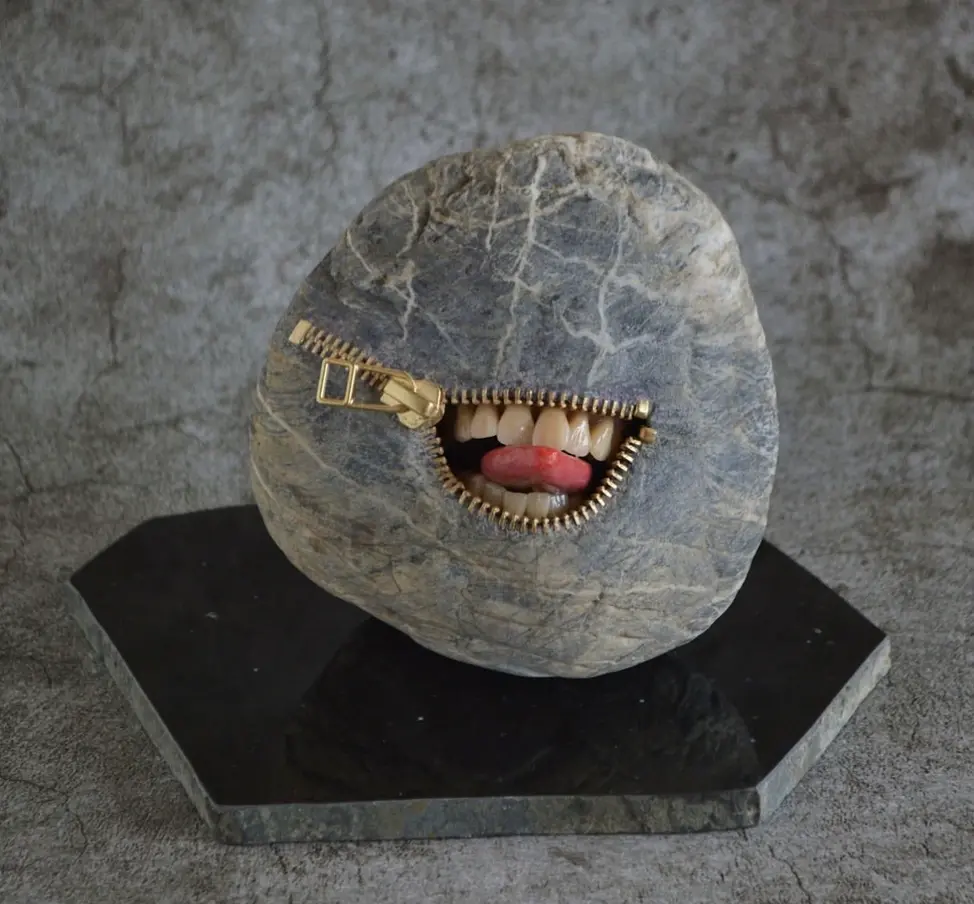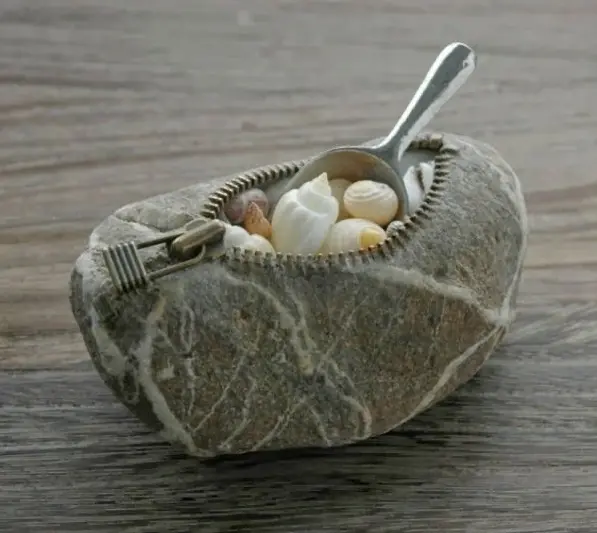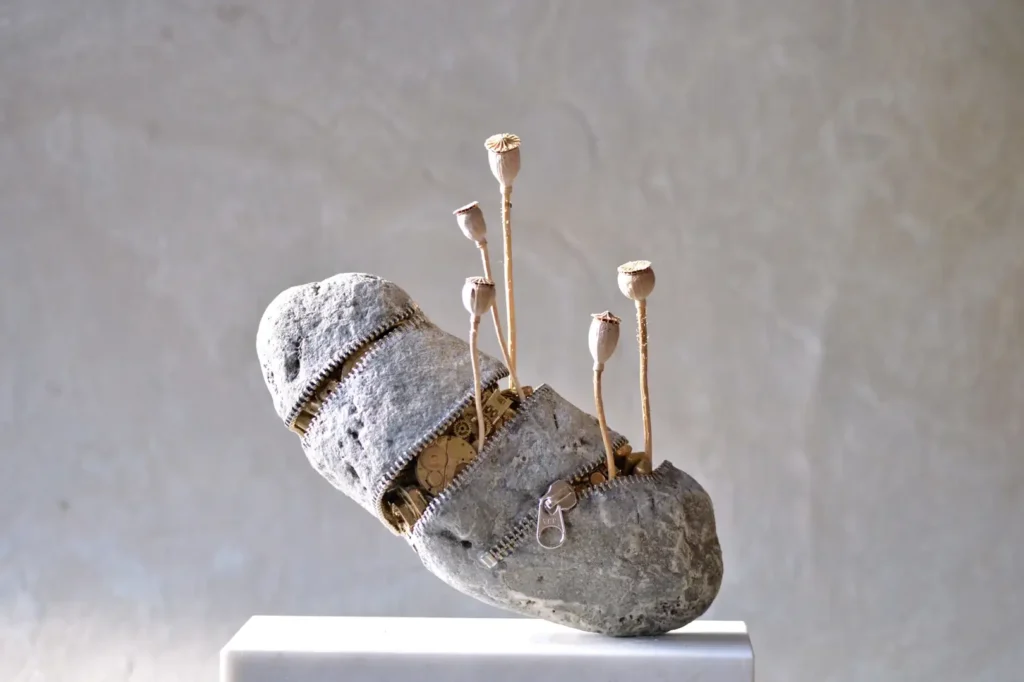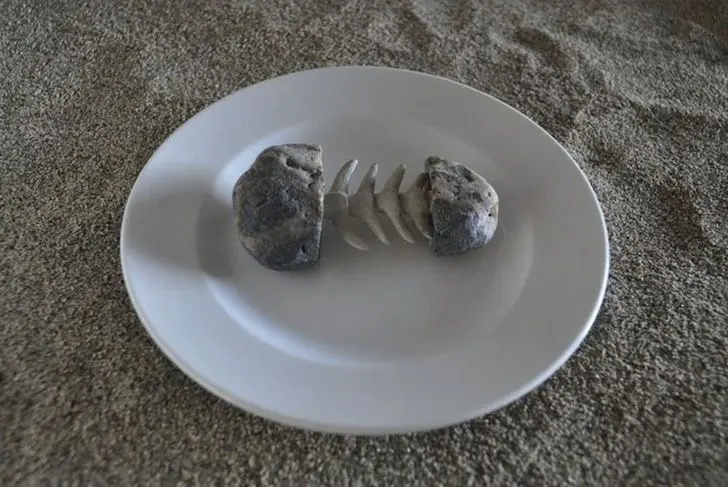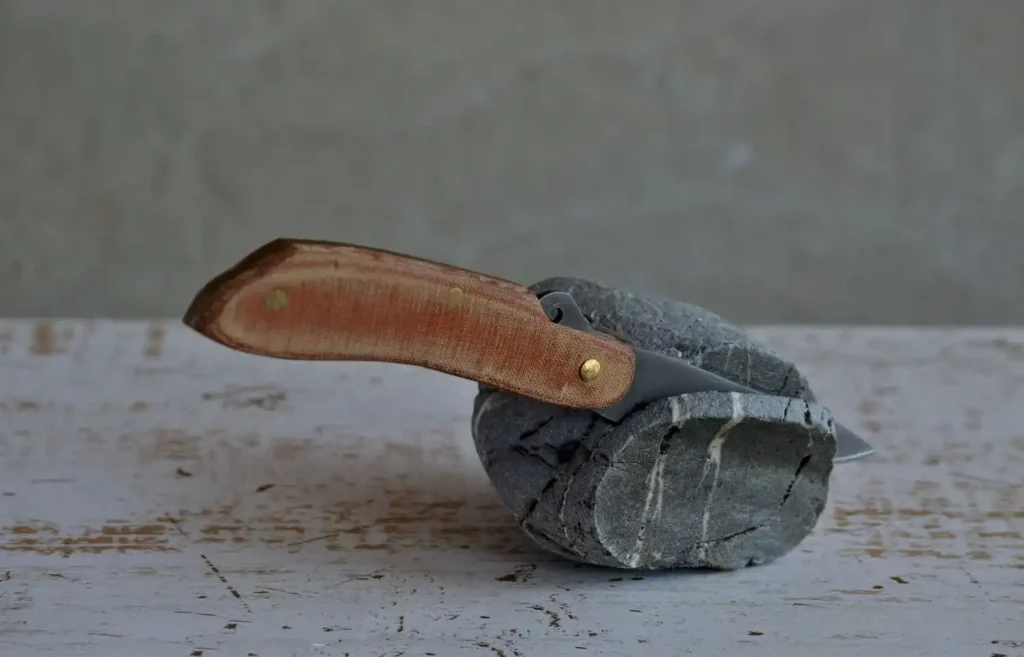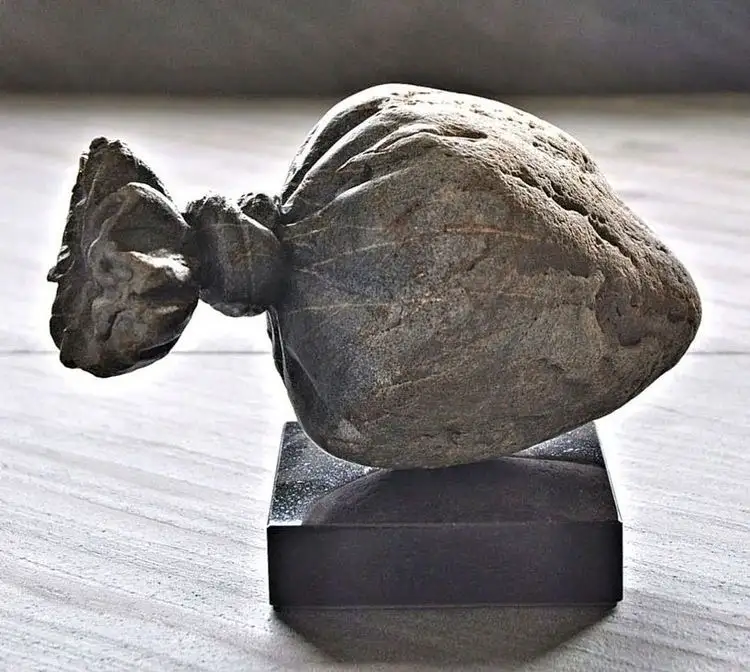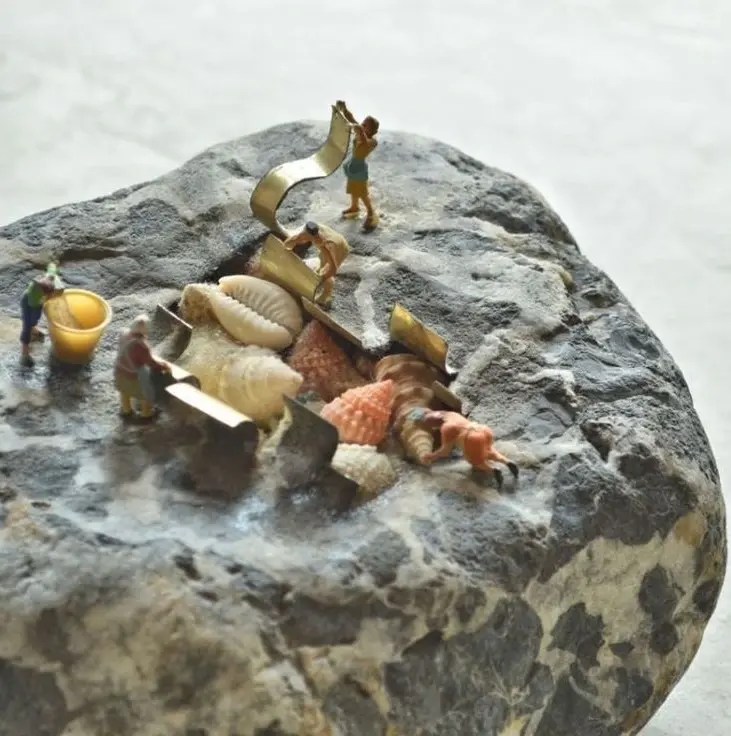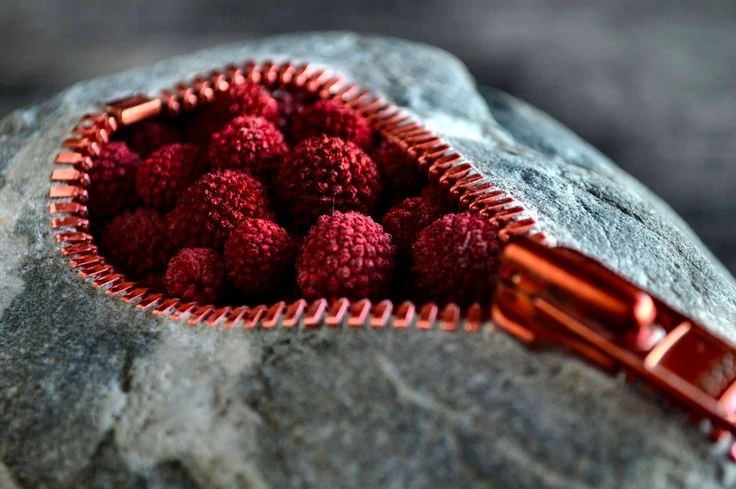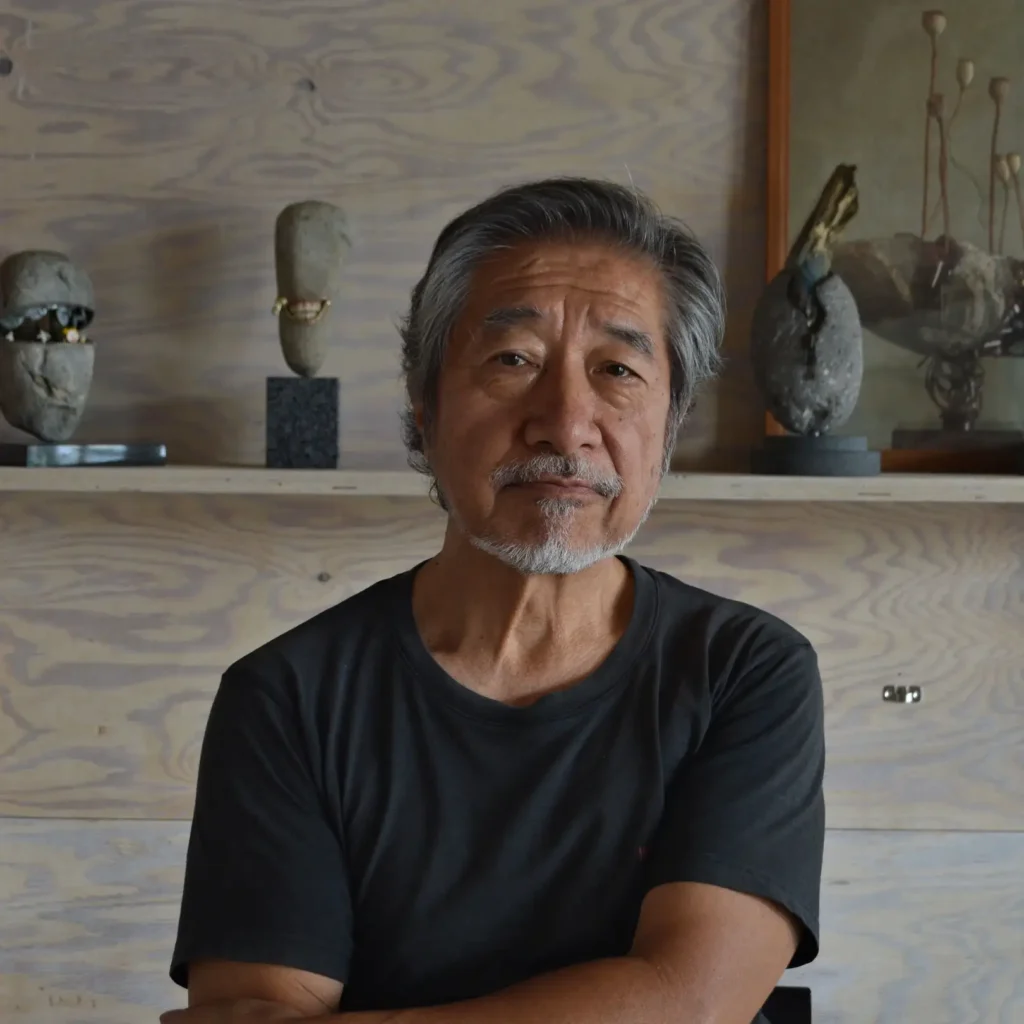His passion leads him to create the surrealist stone sculptures twisting everyday objects such as clothes, card games or a mouth surrounded by a zipper – Hirotoshi’s signature art-piece.
My family has been a stone masons for over 140 years. Since I was a high school student, I have been carving simple garden lanterns while helping out during summer vacations. So it was natural for me to choose stone as a material.
My works can be categorized into two types: figurative works using marble and other materials like Western sculptures, and works that utilize the shape of the original stone while combining it with different materials. Incorporating different materials into a stone sculpture can completely change the impression of the stone’s materiality, and depending on how it is carved, it can give people the feeling that it is not stone at all. The idea may start with “words”. Stone is often described as “hard,” “heavy,” or “cold”. I wonder if it is possible to make them look “soft,” “light,” and “warm”. By combining familiar stones and familiar everyday objects, an unrealistic work of art is created. It is just like a surrealist painting.
The marble and andesite I use in my works are purchased from suppliers. I also buy pebble stones from a local building materials store, as most of the materials are used for the foundation work of the family business. Depending on the work, I go to the local riverbanks to pick up stones that may express the image I have in mind.
It goes back much further than that; it started in 1985, so next year will mark its 40th anniversary. This craft event started with 45 booths in a park in the city after being approached by fellow woodworkers in the Matsumoto area. Since the 10th event, we have been selecting artists, and currently we have about 1,000 applicants every year from all over the country. The actual number of craftspeople who can participate in the event is about 250 (as a rule, individual applicants are required to apply). We have applications in the following genres: woodwork (including lacquer), dyeing and weaving, glass, metal, ceramics, and others (I am here).
As efficiently mass-produced, inexpensive products become more common, traditional handicraft items made from natural materials are struggling. Although each local government is trying to protect traditional crafts, traditional crafts are in a difficult situation everywhere as people’s lifestyles change. For example, Japanese paper and calligraphy brushes, which used to be necessities in Japan, have been replaced by pens and paper, and in today’s paperless society, they are no longer necessities in our daily lives. I am not that familiar with AI, but even if AI can be used for design, there are still many aspects of production that can only be expressed by human hands.
I think I wanted to be a product designer or a textile artist, especially dyeing.
I am not really interested in conceptual art. I am beyond the age of being amazed by such an art.
Social networking sites are seen by people all over the world, so I can get more publicity than if I were featured in a local newspaper. I don’t sell my artwork online, but I update my SNS as a diary for myself as well. I receive inquiries about my work and interview requests from all over the world, and I have even received messages from people who want to become my apprentice. I am an individual artist, so I can’t answer all of the requests, but I am happy with their comments. There have been several times when other people have copied my work. So, I think it is necessary to post on social networking sites to let people know that I am the original artist of the work.
I feel that skills are mastered through years of practice, but the ability to conceive new ideas comes from communicating with various people and observing familiar objects and nature. I want people to have a lot of information and experience in order to create your unique and one-of-a-kind work of art.
I am currently working on a number of pieces for an exhibition to be held in the winter, as well as a large monument that depicts the moment when water splashes and ripples spread out. I am also looking forward to seeing what new works will be created by unexpected encounters with stones, as I am often inspired by the forms of natural stone.
